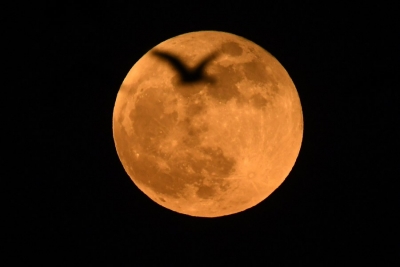New York, April 8 (IANS) For centuries, people have suspected a full moon in the sky to cause mysterious changes in people. Now, psychiatrists at Indiana University’s School of Medicine in the US have found deaths by suicide increase during the full moon.
According to researchers, the increased light from the full moon could be what leads to the increase in suicides during that period.
Ambient light plays a major role in the body’s circadian rhythm, which is the natural 24-hour cycle our bodies follow to regulate when we are asleep and when we are awake.
Moonlight could be impacting people at a time when it should be darker.
The team looked at data in the state of Indiana about suicides that took place from 2012-2016. They found deaths by suicide significantly increased during the week of the full moon, with people over age 55 showing an even higher increase.
They also looked at the time of day and months that suicides took place, finding 3 p.m. to 4 p.m. and the month of September to be peak times for suicides.
“We wanted to analyse the hypothesis that suicides are increased during the period around full moons and determine if high-risk patients should be followed more closely during those times,” said study author Alexander Niculescu in a paper published in the journal Discover Mental Health.
Niculescu and his team previously developed blood biomarker tests for other mental health conditions (anxiety, depression, and post-traumatic stress disorder) and for pain.
Using blood samples previously taken by the coroner from some of the people, the team was able to see which biomarkers were present.
“We tested a list of top blood biomarkers for suicidality that we identified in previous studies,” Niculescu said.
The biomarkers for suicidality that are predictive of death by suicide during full moon, peak hour of day and peak month of the year compared to outside of those periods appear to be genes that regulate the body’s own internal clock, so called ‘circadian clock’.
“Using the biomarkers, we also found people with alcohol-use disorder or depression may be at higher risk during these time periods,” the researcher noted.
The effect of ambient light and body clocks in suicide needs to be studied more closely, along with how people sleep and their exposure to light.
“Changes in light can affect vulnerable people, in conjunction with other risk factors,” said the study.
The peak of suicides from 3 to 4 p.m. could be related to stressors throughout the day as well as a decrease in light beginning to occur that day, causing a lower expression of circadian clock genes and cortisol.
In September, many people are experiencing the end of summer vacations, which could cause stress, as well as seasonal affective disorder effects, as daylight decreases during that time of year.
“Our work shows the full moon, fall season and late afternoon are temporal windows of increased risk for suicide, particularly in individuals who suffer from depression or alcohol use disorders,” Niculescu said.
–IANS
na/shb/


Comments are closed.